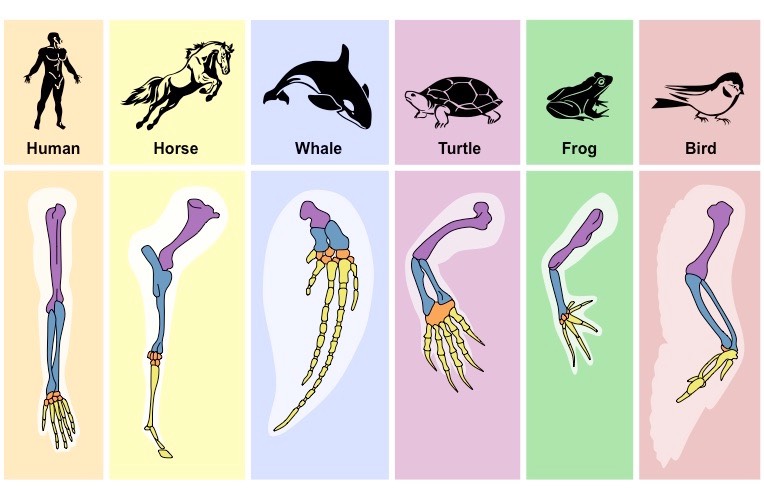![]()
Understanding:
• Evolution of homologous structures by adaptive radiation explains similarities in structure when there are
differences in function
Comparative anatomy of groups of organisms may show certain structural features that are similar, implying common ancestry
- Anatomical features that are similar in basic structure despite being used in different ways are called homologous structures
- The more similar the homologous structures between two species are, the more closely related they are likely to be
Homologous structures illustrate adaptive radiation, whereby several new species rapidly diversify from an ancestral source, with each new species adapted to utilise a specific unoccupied niche
![]()
Application:
• Comparison of the pentadactyl limb of mammals, birds, amphibians & reptiles with different modes of locomotion
A classical example of homologous structures is the pentadactyl limb in a variety of different animals
- Mammals, birds, amphibians and reptiles all share a similar arrangement of bones in their appendages based on a five-digit limb
Despite possessing similar bone arrangements, animal limbs may be highly dissimilar according to the mode of locomotion:
- Human hands are adapted for tool manipulation (power vs precision grip)
- Bird and bat wings are adapted for flying
- Horse hooves are adapted for galloping
- Whale and dolphin fins are adapted for swimming
The Pentadactyl Limb

